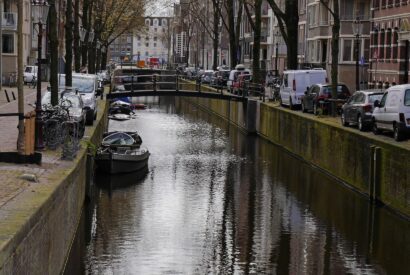Water consumption in agriculture
The hydrological footprint of the irrigated agriculture sector plays a crucial role, accounting for over 70% of the water available for consumption worldwide. The water stress is notably high in this scenario. The priority should be to encourage practices that enhance water productivity, which involves the restoration and modernization of existing irrigation infrastructures and the adoption of more innovative technologies.

Water scarcity
The management of water resources is prone to conflicts worldwide, making ensuring sustainable use not an easy task. Water, as a renewable natural resource, is fundamental for human life and productive processes. However, both its quantity and quality have been diminished due to imbalances caused by population growth, changes in consumption patterns, irrigated agriculture, industrial development, and persistent droughts intensified by climate change.
The combination of both factors has led to significant issues in water supply management. Besides human consumption, this resource is essential for food security, from production through food processing to households and consumers. Unfortunately, water usage is not efficiently managed, both globally and nationally.
Water scarcity is one of the primary current global issues. It’s estimated that nearly 97% of the Earth’s water is saline and, therefore, unsuitable for human consumption. The remaining water sources are mostly groundwater, leaving less than 1% as freshwater available for consumption. This underscores our awareness that water is a scarce and limited resource, essential for sustainable development.
The need to “produce more with less” is critically important due to population growth. Available freshwater resources per person have decreased by over 20% in recent times. As demand increases, freshwater becomes increasingly scarce, intensifying competition for it.
Water in the agricultural sector
Specifically, the hydrological footprint of irrigated agriculture plays a significant role, representing over 70% of the water available for consumption globally. Water stress in this context is notably high. The priority should be to encourage practices that enhance water productivity, including the rehabilitation and modernization of existing irrigation infrastructure and the adoption of more innovative technologies.

Furthermore, climate change is altering rainfall patterns. Increased droughts and water deficits in rainfed agriculture pose a risk to life and nutrition. It’s important to note that water use for food production represents one of the most significant pressures and will continue to be so if the situation is not addressed.
The primary issue in irrigated agriculture is that more water is applied than what is actually consumed. This is because irrigation systems are never entirely efficient. Additionally, a certain amount of water needs to flow through the soil to leach out salts and other compounds, thus preventing excessive accumulation of contaminants in the soil, both natural and anthropogenic. The water used but not consumed returns to the natural environment with a loss of quality.
The contamination of water bodies by salts, fertilizers, and pesticides from irrigation is a growing problem worldwide. How agriculture uses freshwater will be decisive in ensuring its availability for other activities and the preservation of ecosystems, as it is the largest user of water globally.
Similarly, both the quality of irrigation water and its proper management are crucial for crop development. This affects both crop yields and soil physical conditions. Moreover, different types of crops require different qualities of irrigation water. Therefore, it’s very important to perform a water analysis and monitor all physical and chemical parameters before the entire process.
When the water is returned to the natural environment after being used in irrigation, carrying fertilizers and pesticides, it adversely affects it. That river, reservoir, or sea, among other receiving bodies, becomes a source of pollution for the environment. At this point, it’s also crucial to conduct a thorough water quality study, monitoring all necessary parameters.
Differences in water productivity between countries depend mainly on farmers’ access to modern agricultural materials, efficient irrigation systems, and better soil and water management. The performance gap between countries in this sector is a reality, necessitating investments in new irrigation systems or in the rehabilitation and modernization of existing ones, as well as quality control. All this should be preceded by policy instruments, such as water allocation, to maintain or reduce its use.
Join the future of continuous water quality monitoring


